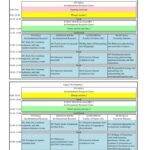Schedules and Program
Schedules
- 3rd Aug., Thu: Registration, ice-breaker (on site)
- 4th Aug., Fri: Welcome ceremony, oral sessions, posters (on site)
- 5th Aug., Sat: Plenary symposium, oral sessions, posters (on site)
- 6th Aug., Sun: Plenary symposium, oral sessions, posters (online), APA business meeting, banquet (on site)
- 7th Aug., Mon: Plenary symposium, oral sessions, posters, ceremony (on site)
Program
Please download the program for the APC2 below.
Please note that slots were limited for oral presentations and many contributions have been assigned to poster presentations.
All the authors of on-site poster presentations who also wish to upload their poster PDF are invited for extra online poster presentations.
For the core-time of the online poster session, a Zoom breakout room will be provided for each of the presentations.
If you are interested in the extra online poster presentations, please contact apc2-program@apc2.org.
Banquet
Banquet will be held on-site on 6th Aug, 2023.
Scientific Sessions
Scientific sessions cover all aspects of palaeontology. Please find topics of each session below.
 Theme 1
Theme 1
Early life, Cambrian explosion, and later macroevolutionary events
Convener: Huaqiao Zhang (Nanjing Institute of Geology and Palaeontology)
Key evolutionary innovations at the origin and early diversification of eukaryotes, multicellular organisms, and animals. The biosphere and its environments interacted at Precambrian-Cambrian transition. The paleobiology, biostratigraphy, taphonomy, and geochemistry at the Neoproterozic to early Cambrian.
 Theme 2
Theme 2
Secular fluctuations in microbialite development throughout Earth’s history
Convener: Yoichi Ezaki (Osaka Metropolitan University), Jianbo Liu (Peking University)
Microbialites are organo-sedimentary rocks with a long geologic record on Earth. Microbial activity is ubiquitous today and in the past, and has played a key role in the creation of Earth environments throughout geologic time. Through studies of microbialites, we can understand the long-term rise and fall of microorganisms, the nature of their environments, and their interrelationships. This session is relevant to microbial palaeontology, palaeoecology, palaeoenvironment, organo-mineralisation, sedimentology, mass extinction events, and other related topics. Reports on experimental approaches using living microorganisms are also welcome.
 Theme 3
Theme 3
Mesozoic and Paleozoic Oceanic Anoxic Events
Convener: Reishi Takashima (Tohoku University), Hiroshi Nishi (Fukui Prefectural University)
Oceanic Anoxic Events (OAEs) record pronounced change in the paleoceanography and marine ecosystems associated with global perturbation of carbon cycle. This session focuses on stratigraphic, paleoenvironmental and paleontological studies of the Oceanic Anoxic Events (OAEs) during the Paleozoic and Mesozoic periods. Studies of terrestrial ecosystems and climate change during the OAEs will also be included.
 Theme 4
Theme 4
Linkage of Cretaceous solid earth dynamics, greenhouse climate, and response of ecosystems on land and in the oceans in Asia (IGCP679 Joint Session)
Convener: Takashi Hasegawa (Kanazawa University), Gang Li (Nanjing Institute of Geology and Palaeontology)
This session is a collaborative session with IGCP 679. Discussion on linkage of Cretaceous ecosystems and paleoenvironments on land and in the oceans based on the paleontological, geochemical and other point of view is welcomed.
 Theme 5
Theme 5
Evolution of reptiles including birds
Convener: Soki Hattori (Fukui Prefectural University)
This session will cover a wide range of topics related to the paleontology of various reptiles including birds, or sauropsids, and explore their fascinating evolutionary history from a variety of perspectives.
 Theme 6
Theme 6
Secondary aquatic adaptation of tetrapods
Convener: Yasuhisa Nakajima (Tokyo City University), Jun Liu (IVPP)
Many terrestrial vertebrate lineages have returned to life in water since the Paleozoic, accompanied by various advancements in morphology and physiology. This session focuses on the evolutionary aspects of secondarily aquatic tetrapods from paleontological and neontological viewpoints.
 Theme 7
Theme 7
Diversity of non-tetrapod vertebrates
Convener: Shinya Miyata (Josai University), Yoshitaka Yabumoto (Kitakyushu Museum of Natural History and Human History)
This session covers various aspects of fossil fishes including taxonomy, phylogeny, morphology, ecology, biogeography, new records, comparison with Recent species, etc.
 Theme 8
Theme 8
Fossil record of mammals and their allies
Convener: Yuri Kimura (National Museum of Nature and Science), Tao Deng (IVPP)
Mammals, which range in size from shews to blue whales, show great diversity of forms, habitats, and life strategies, being a significant group in the Earth’s ecosystem. In the past decades, increased findings of mammalian fossils in Asia have contributed to our understanding of evolutionary biology of mammals and have offered multidisciplinary approaches, including the latest techniques that are rarely applied to non-mammalian vertebrates. In this session, we explore a broad range of mammalian topics in deep time, including taxonomy, phylogeny, functional morphology, feeding strategy, physiology, and ecology, to deepen our knowledge of mammals in the past, present, and future.
 Theme 9
Theme 9
Diversification and evolution of vascular plants
Convener: Toshihiro Yamada (Osaka Metropolitan University), Jinzhuang Xue (Nanjing Institute of Geology and Palaeontology)
Fossils provide direct evidences on innovations in plant body plans, as well as on the background in which these innovations had been happened. We will discuss on them in this session. Related evo-devo papers are also welcomed.
 Theme 10
Theme 10
Mesozoic terrestrial biota in the realm of Angiosperm diversification
Convener: Harufumi Nishida (Chuo University), Ge Sun (College of Paleontology, Shenyang Normal University)
In this session, we will focus on the floristic changes during the Mesozoic including the rise of angiosperms. We will also welcome contributions on the Mesozoic terrestrial biota and environments which should have been influenced by floristic changes.
 Theme 11
Theme 11
Cenozoic floristic evolution in Asia
Convener: Atsushi Yabe (National Museum of Nature and Science), Tao Su (Xishuangbanna Tropical Botanical Garden)
Origin of floristic diversity in the Asian region has been greatly documented for the past decade based on Cenozoic paleobotanical studies in new and known fossil sites. Chronostratigraphy of each locality has also been revised these days. We would like to discuss the latest knowledge on paleobotany, phytogeography and paleoclimate to synthesize our understandings on floristic evolution in the Cenozoic of Asia.
 Theme 12
Theme 12
Diversity change and evolutionary history of radiolarians
Convener: Noritoshi Suzuki (Tohoku University); Lanlan Zhang (South China Sea Institute of Oceanography, Chinese Academy of Science), Xin Li (Nanjing Institute of Geology and Palaeontology)
This session is ready for any topics on radiolarians and advanced studies mainly based on radiolarians. Oceanographic, paleoceanographic and geotectonic topics as well as new technologies like machine learning are much welcomed.
 Theme 13
Theme 13
Foraminiferal biology and paleontology for understanding life, environmental histories and biostratigraphy
Convener: Takashi Toyofuku (Japan Agency for Marine-Earth Science and Technology), Hiroki Hayashi (Shimane University), Hiroki Matsui (Akita University), Haruka Takagi (Chiba University), Akira Tsujimoto (Shimane University)
Foraminifera are important microfossils that have supported the development of the Earth Science as excellent index and facies fossils, as they change their distribution in response to the microenvironment and their occurrence are well documented. Especially in the Asian region, where population growth and industrial development are rapid, coastal environmental changes and the effects of land use changes on the ocean are important issues that must be monitored to make a safe marine environment, and foraminifera are excellent environmental indicator organisms. In this session, we would like to include in the scope the ecology and biology of foraminifera, as well as their applications as indicators of such geologic times and environments.
 Theme 14
Theme 14
Molecular palaeobiology and molecular evolution
Convener: Kazuyoshi Endo (University of Tokyo), Yanhong Pan (Nanjing University)
This session explores multifaceted aspects of molecular palaeontology and molecular phylogeny, including molecular fossils, biomineralization, molecular phylogeny of fossiliferous taxa, resurrection of ancestral genes, and (paleo-)evo/devo of multicellular organisms. Presentations on any topics related to this field will be welcome.
 Theme 15
Theme 15
Geochemical proxies discovering palaeoecology, palaeoenvironment, and their interactions
Convener: Kazuyoshi Moriya (Waseda University), Kotaro Shirai (University of Tokyo), Wei Wang (Nanjing Institute of Geology and Palaeontology)
Geochemical proxies have helped to discover ecological interactions and “coevolution” between life on Earth and its environment. Recent advancement in analytical instrumentation have allowed us to disclose faint and/or hidden signatures of ecosystem preserved in fossils and rocks. Conventional techniques hitherto established can also be powerful tools when they are applied to unexamined taxa, physiological pathways, ecological aspects, and/or elements. This session focuses on any subject of geochemical proxies in palaeoecology, palaeoclimatology, and palaeoceanography. Topics on proxy and/or instrument development are also welcome.
 Theme 16
Theme 16
Tomographic techniques and computer-aided visualization in palaeontology
Convener: Soichiro Kawabe (Fukui Prefectural University), Takuya Imai (Fukui Prefectural University)
In paleontology, advances in computed tomography (CT) technology have made it an increasingly popular tool for studying extant and extinct organisms. This session will explore how CT technology is expanding the scope of paleontological research, providing detailed observations of internal structures and creating complex 3D visualizations of organisms, and will also highlight the potential of CT for further paleontological research.
 Theme 17
Theme 17
Analytical approaches for evolutionary morphology
Convener: Takao Ubukata (Kyoto University)
Numerical methods are of growing importance in morphological studies of fossils. The past several decades have seen the introduction and development of many analytical techniques aimed at addressing palaeontological questions related to morphological data. This symposium will focus on the practical aspects of morphological analysis and will cover a broad range of methodologies such as morphometrics, allometry, theoretical morphology, morphospace analysis, disparity analysis, analysis of evolutionary rates, phyllogenetic analysis, functional morphological analysis, and so on.
 Theme 18
Theme 18
Palaeozoic macroevolutionary events (IGCP653 Joint session)
Convener: Renbin Zhan, Yuandong Zhang (Nanjing Institute of Geology and Palaeontology, China), Dongchan Lee (Korea), Yukio Isozaki (Japan)
Palaeozoic is the period when the earth ecosystem experienced some major turnovers or replacements, such as the Great Ordovician Biodiversification Event (GOBE), the End Ordovician Mass Extinction (EOME), the Late Devonian Mass Extinction (also called the Franian/Famenian Extinction, or F/F Event), and the end Permian Mass Extinction (EPME, the largest ever mass extinction in earth history). All these biotic events were closely related to one or a series of geologic events, particularly environmental events of global scale. All case studies of local or regional scales or even on a global scale on the details of these events or their dynamics particularly triggering and controlling factors are welcome to submit an abstract or summary to this session, and to come for the meeting where we can exchange our research achievements. Maybe we can work out some possibilities for future collaborations on these events.
 Theme 19
Theme 19
Mesozoic terrestrial ecosystem
Convener: Bo Wang (Nanjing Institute of Geology and Palaeontology)
Coming soon.
 Theme 20
Theme 20
Triassic-Jurassic transition and biota
Convener: Yongdong Wang (Nanjing Institute of Geology and Palaeontology), Benjamin Breeden (National Museum of Nature and Science, Japan / University of Utah), Cheng Quan (China)
The Triassic - Jurassic extinction event represents one of the five mass extinction events in the Phanerozoic. It has been intensively investigated in the western Tethys marine realm for a long time; and the study of the continental boundary event in the eastern Tethys area is increasing. This session aims to display recent study progresses in both the marine and continental Triassic and Jurassic sedimentary records mainly in eastern Tethys area in Asia, to show the diversity of fossil organisms such as invertebrate, vertebrate, palaeobotany and palynology, as well as the ecosystem and palaeoclimate variations across the Triassic and Jurassic transitions.
 Theme 21
Theme 21
Big Data of Palaeontology and Stratigraphy
Convener: Honghe Xu and Bing Huang (Nanjing Institute of Geology and Palaeontology, CAS)
As fundamental branches of geoscience, palaeontology and stratigraphy (PS) stand as traditional disciplines of geoscience for over two centuries. Recent decades have witnessed remarkably rapid development of application of numerical methods and quantitative analyses driven by big data to both palaeontology and stratigraphy. This session aims to promote new research paradigm and more data-driven discoveries in palaeontology and stratigraphy. We sincerely welcome outstanding studies concerning all aspects in the field of data analysis in PS, the interdisciplinary study of PS integrated with informatics, computing science, and artificial intelligence. Our focus includes, but not limited to, macroevolution, palaeoecology, palaeobiology, spatio-temporal pattern of early organisms, graphic correlation, database, data mining, state-of-the-art progress, data-oriented case studies, PS data(set) description, as well as future directions of data-driven research approaches, the improvement of existing techniques, and the development of new techniques and trends.
 Theme 22
Theme 22
Open session
All aspects of palaeontology are welcome.











